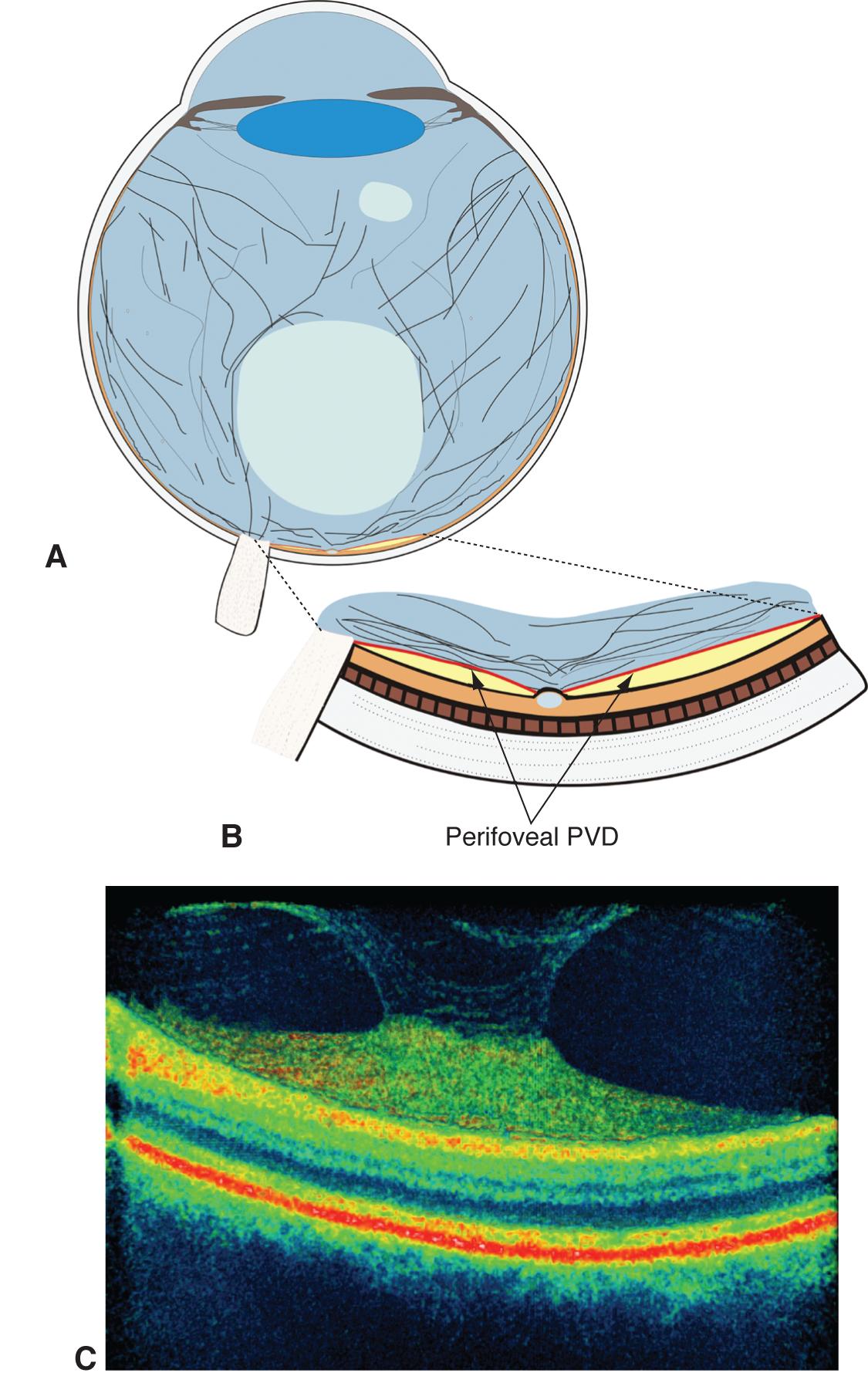What are floaters?
Floaters are tiny clumps of cells inside the vitreous, the liquid-jelly that fills the inside of the eye. They are extremely common, and tend to occur with age, after eye trauma, and more so in people with near-sightedness. Floaters are usually dark in color because they are shadows cast onto the retina when light entering the eye hits these cells. Floaters also frequently move with eye movements because these cells are suspended in a fluid-jelly matrix. ;In medical terms, floaters are often called posterior vitreous detachments (PVDs).

Diagram of a Posterior Vitreous Detachment (floater) with tension on the retina, represented by the red lines (A). This tension or traction can also be seen by a high-resolution OCT image (C), where the wispy fibers of the vitreous at the top of the image is seen “pulling” up on the solid retinal tissue towards the bottom. Images from the courtesy of © 2013 American Academy of Ophthalmology.
What are flashes?
Within the eye, there are connections between the vitreous jelly and the retina. Flashes of light occur when the vitreous breaks down and starts to pull on one’s retina with aging, after trauma, or after eye surgery. This tension on the retina is interpreted by the brain as a flash, usually in one’s peripheral or side vision. Once the vitreous breaks down completely and releases all tension from the retina, a posterior vitreous detachment, or floater, forms. Flashes are important because they can be precursors to a retinal tear or detachment, both of which can lead to blindness.
When to see your physician
Though floaters are common, new floaters, especially if there are numerous new ones, can result from retinal bleeding from a tear in the retina. New onset of flashes can also herald a retinal detachment or retinal tear. If you have either of these symptoms, please schedule an appointment with your physician immediately.
Are there treatments for retinal tears or detachments?
Yes. If a retinal tear is small and single, usually a laser procedure done in the office can seal the tear. If the tear is very large or if there are multiple tears or a full-on retinal detachment, then surgical intervention in the operating room will be necessary to repair the tear or detachment.
Request an Appointment
